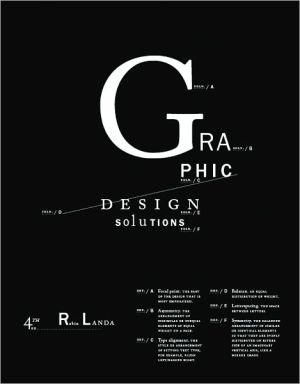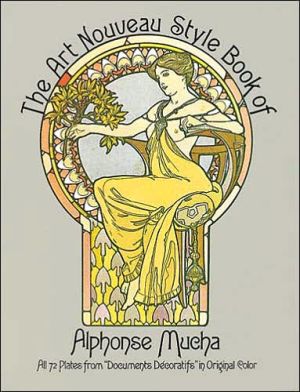Chip Kidd
Chip Kidd is renowned and revered as a maverick graphic designer. Specifically, Kidd's book jacket designs for such major New York publishers as Alfred A. Knopf are among the most significant and innovative of our time. This richly illustrated book-the first critical selection of Kidd's design work-looks closely at this contemporary visual pioneer. Véronique Vienne presents a full and nuanced view of Kidd, discussing how he has developed celebrity status as a designer, design critic,...
Search in google:
Chip Kidd is renowned and revered as a maverick graphic designer. Specifically, Kidd's book jacket designs for such major New York publishers as Alfred A. Knopf are among the most significant and innovative of our time. This richly illustrated book-the first critical selection of Kidd's design work-looks closely at this contemporary visual pioneer. Véronique Vienne presents a full and nuanced view of Kidd, discussing how he has developed celebrity status as a designer, design critic, lecturer, and editor. She also relates how Kidd is greatly influenced by popular culture, noting his vast collection of Batman memorabilia. Vienne concludes by examining Kidd's editorial involvement with books on cartoonists as well as his own first novel, The Cheese Monkeys, published in 2001 to critical acclaim. Chip Kidd reveals the fascinating life and career of a revolutionary graphic designer with a winning public persona, whose ambitions now also lean toward editing and writing. The book will appeal to anyone involved in design and popular culture as well as admirers of Kidd's extraordinary creative spirit.Author Biography: Véronique Vienne is the author of Something to Be Desired: Essays on Design (2001), The Art of Imperfection (1999), and The Art of Doing Nothing (1998) and is a frequent contributor to Graphis and Metropolis magazines. She teaches at the School of Visual Arts in New York. Monographics - Series editor, Rick Poynor Publishers Weekly Designer Kidd's book covers and photographer Ettlinger's author photos deliver a shock of recognition-oh, so that's who designed the cover for Michael Crichton's Jurassic Park, and who hasn't seen that photo of Raymond Carver delivering that ponderous aquamarine glare into the camera? Kidd's accomplishments in repositioning the boundaries of book design come to the fore when presented in bulk, highlighting such innovations as running text across art, using found-art images (which usually include a healthy dose of extreme wit) and even printing type or photos upside down. Ettlinger's sleek photographs take on a slightly otherworldly quality, with authors delivering the same grave facial expression, staring into the camera as though trying to project into infinity. Rather than bringing out each author's individual qualities, Ettlinger instead molds them into an ideal of the author-and it works, despite the fact that anyone who's attended a book signing realizes that authors are as squinty, nerdy, spindly and awkward as the rest of us. Any lover of books will enjoy learning that the making of a book always involves more than one creative person; these two, presented in fittingly well-illustrated, carefully printed and thoughtfully laid-out editions, are at the forefront of managing readers' first impressions. (Oct.) Copyright 2003 Reed Business Information.
\ Publishers WeeklyDesigner Kidd's book covers and photographer Ettlinger's author photos deliver a shock of recognition-oh, so that's who designed the cover for Michael Crichton's Jurassic Park, and who hasn't seen that photo of Raymond Carver delivering that ponderous aquamarine glare into the camera? Kidd's accomplishments in repositioning the boundaries of book design come to the fore when presented in bulk, highlighting such innovations as running text across art, using found-art images (which usually include a healthy dose of extreme wit) and even printing type or photos upside down. Ettlinger's sleek photographs take on a slightly otherworldly quality, with authors delivering the same grave facial expression, staring into the camera as though trying to project into infinity. Rather than bringing out each author's individual qualities, Ettlinger instead molds them into an ideal of the author-and it works, despite the fact that anyone who's attended a book signing realizes that authors are as squinty, nerdy, spindly and awkward as the rest of us. Any lover of books will enjoy learning that the making of a book always involves more than one creative person; these two, presented in fittingly well-illustrated, carefully printed and thoughtfully laid-out editions, are at the forefront of managing readers' first impressions. (Oct.) Copyright 2003 Reed Business Information.\ \ \ \ \ Library JournalNo two artists' names are more recognizable from their frequent appearances on book jackets than Marion Ettlinger and Chip Kidd-Ettlinger for her dramatic author photos and Kidd for his eye-candy designs. Elegantly presenting selections of both artists' work, these two books will entice obsessive fiction readers and publishing junkies, as well as professionals in commercial portraiture and graphic design. Ettlinger is the master of the author image and has captured some of the most famous (e.g., Joyce Carol Oates, Erica Jong, Truman Capote, Denis Johnson, and Ann Beattie), as well as those barely known. While her images don't look like celebrity shots-there are very few smiles, and all are black and white-they are glamorous in a way that says "literary," with thoughtful stares and frequently visible hands. Her style clearly comes out of an art historical aesthetic, and her subjects always manage to look stunning, smart, and authorial, whether they're just sitting on a backwards chair or posed with a theatrical backdrop. The only text apart from identifying captions is Richard Ford's brief foreword, where he admiringly recalls his own sitting for Ettlinger. This is the first time these 200 photos have been shown together inside a book rather than alone, gracing the back flap. Kidd has worked with many of the same authors in his nearly 20 years as a designer for Knopf and a freelancer elsewhere, and during that time his name has become synonymous with hip and beautiful book designs, though he also has a novel to his credit (The Cheese Monkeys; author photo by Ettlinger, of course). His jacket designs include the "two-image collages" he first became known for (e.g., the novels of Cormac McCarthy), as well as more elaborate designs, such as intricate die-cut and vellum overlays for books by Haruki Murakami and Michael Crichton. Graphic designer Vienne (Something To Be Desired: Essays on Design) provides an introduction, in which she discusses Kidd's developments in design, his fellow designers at Knopf, the innovative use of photography, and Kidd's obsession with comic books. Her discussion of his reputation as a "design demigod" will be of interest only to publishing insiders, but her commentary alongside each of the designs (about 100), with spry quotes from Kidd himself, point out the unexpected and ingenious connections between the book and the design elements. Though the aesthetic is different-Ettlinger seems to restore a lost dignity to literary authors, whereas Kidd makes their work look new-both contribute strikingly to the visual image of authors and their words.-Carolyn Kuebler, "Library Journal" Copyright 2003 Reed Business Information.\ \ \ School Library JournalAdult/High School-Graphic-design students, book lovers, marketing and sales majors, and browsers alike will be drawn to this well-designed, beautifully illustrated examination of Kidd's oeuvre. A glance at the examples, from a scrapbooklike tribute to Charles Schulz to the dinosaur silhouette for Michael Crichton's Jurassic Park, reveals the wide-ranging and influential nature of the designer and illustrator's work. He is known most widely for his design of book covers, for example the three progressively colored jackets for Cormac McCarthy's "Border Trilogy" or the typographical logo that Elmore Leonard carries with him from publisher to publisher. Kidd's innovative use of photographs and graphic-design elements to reinforce the concept of reality in fiction added a new dimension to book covers. Vienne begins with a candid and useful history of her subject's development, especially his obsession with Batman and other comic heroes. While the author places him firmly as a member of the team at Knopf with a publisher willing to take some significant chances, she allows him his just deserts as an innovator. There are 105 color reproductions, almost all described stylistically in the text, with wry comments and insights from Kidd in the captions. A fine introduction to an artist and art form visible everywhere, but not always given its due.-Susan H. Woodcock, Fairfax County Public Library, Chantilly, VA Copyright 2004 Reed Business Information.\ \








